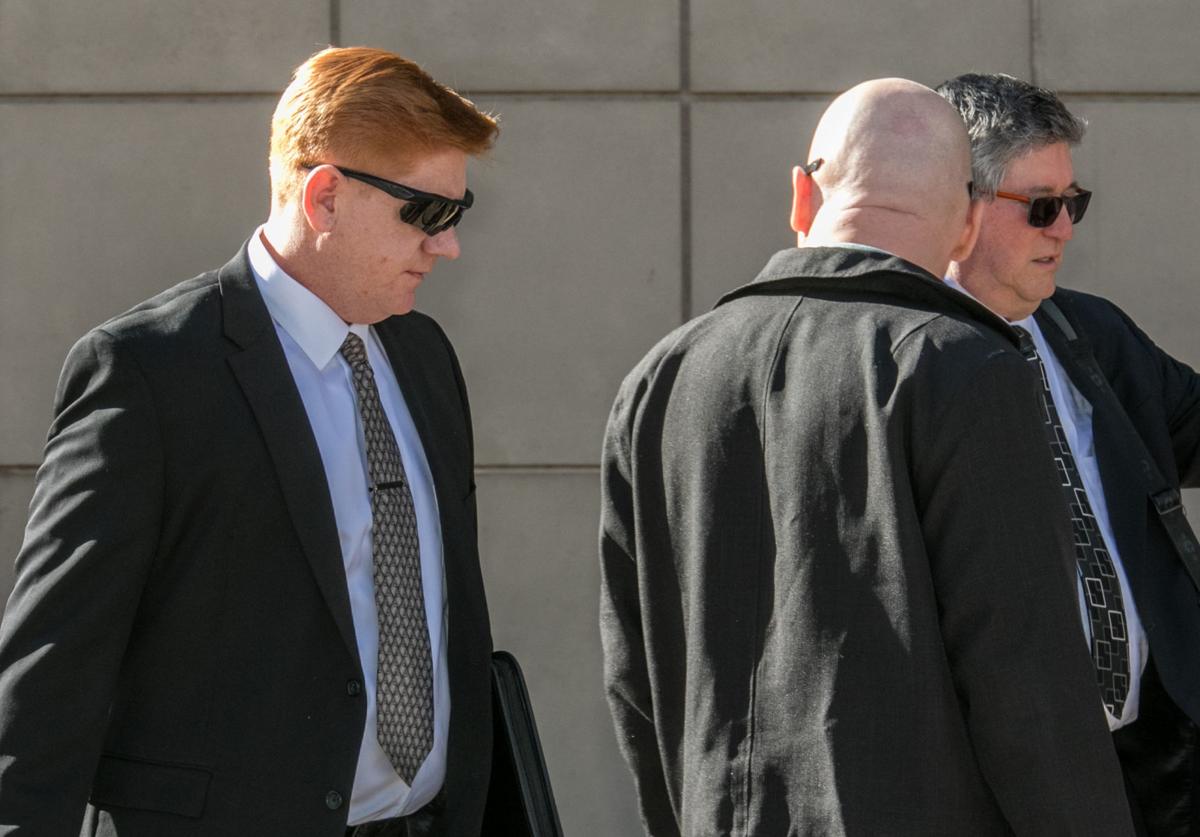Jose Antonio Elena Rodriguez was killed by one of the first shots fired by Border Patrol agent Lonnie Swartz, the defense’s forensic pathologist testified at his murder trial Wednesday, contrary to the conclusion of the government’s expert witness.
“I determined the first shot was the fatal shot to the head, which fits one of the earlier conclusions from the Mexican pathologist,” Dr. Cyril Wecht told jurors. The forensic pathologist has been practicing for more than 50 years and has consulted in some high-profile cases, including the assassination of President John F. Kennedy.
Swartz fired 16 shots from the U.S. side of the border into Nogales, Sonora, on Oct. 10, 2012, hitting Elena Rodriguez 10 times in the head and back.
The government charged Swartz with second-degree murder and has said the fact he continued to shoot Elena Rodríguez after he was on the ground showed the agent acted deliberately or recklessly with disregard for human life. The agent is on trial in federal court in Tucson.
While Sean Chapman, one of two attorneys representing Swartz, doesn’t contest the agent shot and killed the teen, he has said it was justified, and because the teen was killed by one of the first shots, the rest of them are legally irrelevant.
One key point has been whether there was movement after the teen fell to the ground. There’s video from an infrared camera that seems to show Elena Rodríguez with his left hand extended out, but then images from the scene show him with his arm tucked in close to his body when he died. The defense says the video is not reliable in part because of how blurry it is.
The teen also had abrasions on the left side of his face, but his final resting position shows him with his right cheek on the sidewalk.
Prosecutors’ witnesses have said this proved he was alive when Swartz reloaded and continued to fire, but Wecht testified that it was also possible there were involuntary spasmodic movements in the last moments before he died.
Last week, Dr. Emma Lew, director of the Miami-Dade County Medical Examiner Department, testified that Elena Rodríguez was possibly running when he was hit in the back by a bullet that caused him to fall to the ground, hitting the left side of his face and scraping the back of his hands.
Then, he probably lifted himself up briefly, raised his left arm and was struck by the other 10 bullets. One of the last bullets lodged in his forehead, causing him to hit the ground before turning his face to the final resting position, she said.
But Wecht said Wednesday that it is not possible based on the evidence to say with certainty what kind of movement there was, or whether there was definitive damage to the spinal cord that could have caused paralysis.
“It would be pure conjecture to say there was damage to the spinal cord,” he said, since the Mexican pathologists didn’t closely examine the spinal cord.
Wecht said he agreed with the Mexican medical examiners’ first conclusions, that one of the first shots was the one to the head that caused him to fall down without being able to arrest his fall, which would explain the abrasions to the back of his hands and face.
“One cannot know what kinds of movements there could have been after one has a brain injury like this,” he said. He also showed the jury a series of photos of athletes suffering head injuries and how their bodies, particularly their arms, moved as a result of a concussion.
But it was also possible the shot to the head and the one close to the vertebrae could have happened one after the other based on the distance from each other, he said.
As the Mexican medical examiners received more information from the U.S. government, they changed their position and said the shot to the back was more likely to be the fatal one. But Wecht implied their change of opinion years later could have been influenced after the federal government decided to indict Swartz.
“It’s not uncommon for a pathologist to readjust their opinion after they are provided more information, right?” Assistant U.S. Attorney Wallace Kleindienst asked.
Wecht responded that it could happened but he based his reports on the science. “I have strong feelings on this,” he said, “for forensic pathologists not to be an extension to the prosecution ... I’m sorry sir, I don’t function in that fashion.”
Kleindienst asked if he was suggesting the prosecution manipulated the Mexican pathologists’ opinion.
“Not in a malevolent way,” Wecht said, but “in a pursuit of your prosecutorial activities. You did your job and you did your job well.”
At times, Wecht became combative during his cross-examination. Other times he made the courtroom chuckle.
When Kleindienst asked him how both shots, to the head and back, could have happened one after the other, Wecht asked him to turn around, with his back to the pathologist.
“Bang, bang,” he said, making a motion as if he was firing at Kleindienst. “I just shot you twice.”
“I felt something,” Kleindienst said jokingly. “I’m just saying it’s possible,” Wecht said.
The trial will continue Thursday.





